There are many last names in Japan, but here are the top 10 most commonly used surnames among Japanese people, along with their surname origins.
10th 加藤(Kato)
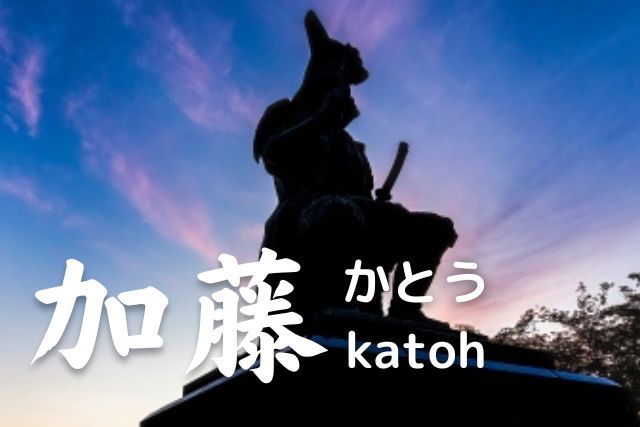
The “加(Ka)” in Kato comes from Kaga, now Komatsu City, Ishikawa Prefecture, and the “藤(Fuji)” is said to come from the 藤原(Fujiwara) clan.
The first Kato is thought to have been Fujiwara no Kagemichi, a samurai in the service of Minamoto no Yoriyoshi, who became Kaga no Fujiwara, short for Kaga no Fujiwara, and thus the name “Kato” is said to have come to be used. The “介(suke)” of “加賀介(Kagano-suke)” was a position similar to that of a deputy governor, the second in charge of a prefectural office, and the first was “守(mori)”. Since the mori often stayed in Kyoto, the center of Japan at that time, it is said that the second “suke” was practically involved in the affairs of the region.
9th 小林(kobayashi)
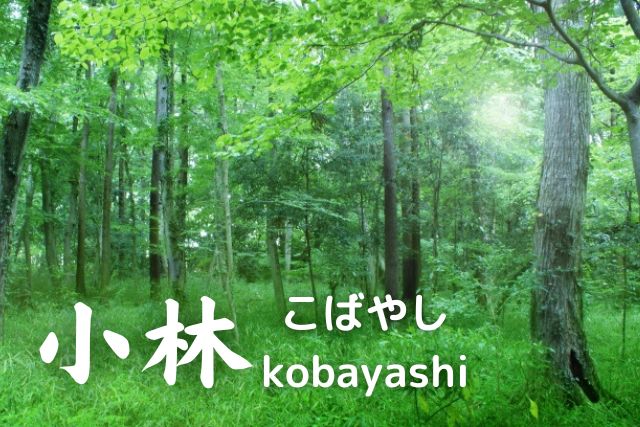
“小(Ko)” means “small,” and “林(hayashi)” means “small forest,” referring to thickets, etc. There are forests near villages that protect houses, such as windbreaks and sandbreak forests. It is believed that this became the name of the place and was used as a surname. The origin of the name originated in various parts of Japan, but Kobayashi has its roots in the regions of Nagano, Gunma, and Yamanashi Prefectures. So we can say that Kobayashi is a surname that has roots all over Japan but is most common in Nagano Prefecture and prefectures close to Nagano Prefecture.”小(Ko)” means “small,” and “林(hayashi)” means “small forest,” referring to thickets, etc. There are forests near villages that protect houses, such as windbreaks and sandbreak forests. It is believed that this became the name of the place and was used as a surname. The origin of the name originated in various parts of Japan, but Kobayashi has its roots in the regions of Nagano, Gunma, and Yamanashi Prefectures. So we can say that Kobayashi is a surname that has roots all over Japan but is most common in Nagano Prefecture and prefectures close to Nagano Prefecture.
There are also areas where Kobayashi is called “Obayashi,” and if that is included, the number of place names is considered to be quite large.
8th 中村(Nakamura)
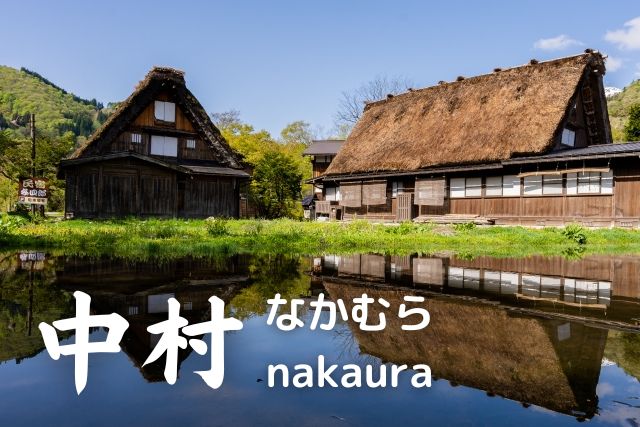
“中(Naka)” means center, and “村(mura)” means village. In the old days, when a small village grew large, it was divided into smaller villages such as 東村(Higashimura East Village) and 西村(Nishimura West Village), and the name “中村(Nakamura)” was derived from the name of the main village, which became the center of the village. It is said that Nakamura originated throughout Japan and is distributed evenly throughout the country.
7th 山本(Yamamoto)
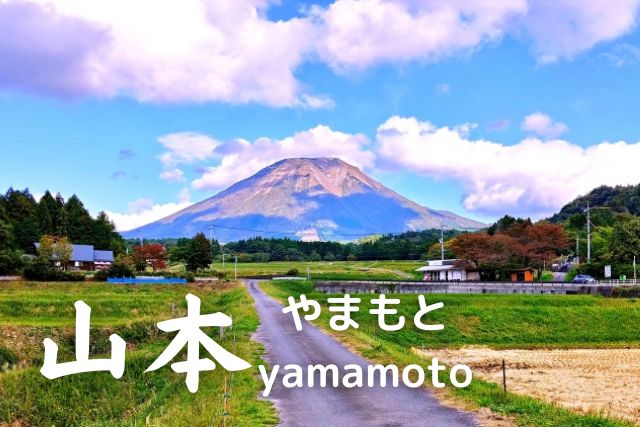
A surname derived from topography, originally in Japan, flat land was developed for rice paddies to produce rice, and one may see a house on the side of a straight road towards the foot of a mountain. The “foothill” of the 山(yama mountain) = 本(fumoto), which is how Yamamoto came to be.
Yamamoto is a surname found mostly in western Japan, such as Kyoto, but it originated in many parts of Japan.
6th 伊藤(Itou)
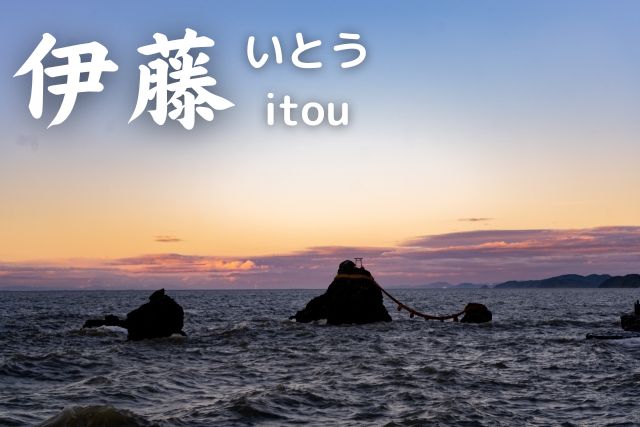
Ito means the Fujiwara clan of Ise (present-day north central Mie Prefecture), and its origin was Fujiwara Hidesato. It is said that the Ito family name began when Motokage Bito, a descendant of the seventh generation of Hidesato, became the 伊勢守(isenomori) and came to Ise and took the name Ito. In other words, the name (伊藤)Ito was derived from “(藤原)Fujiwara of (伊勢)Ise. 伊勢守(Isenomori) was the governor of what is now called the prefecture that governed the region called Ise.
5th 渡辺(Watanabe)
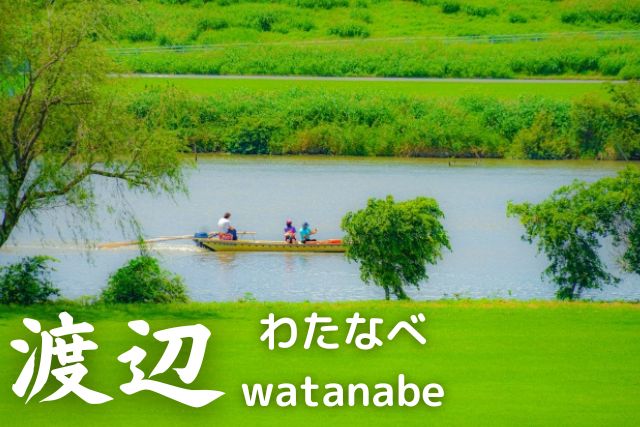
The first 渡部(Watanabe) is the Chinese character for “渡部(Watabe)” from the Asuka period (592-710). This became a surname given by people who worked as “ship handlers,” who transported people and goods by boat. The word “部(be)” is a part of “船渡し(funawatashi),” and the part represents the occupation, and the occupation-derived surname was created as “Watanabe” for short. Later, the surname was derived from the name of the area where 渡部(Watanabe) was located, and so the name 渡辺(Watanabe) became a surname derived from the name of the place.
4th 田中(Tanaka)
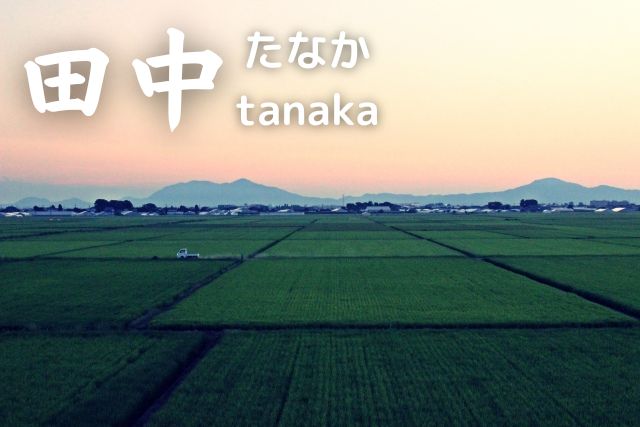
田中(Tanaka) generally means “rice field in the center,” and was named after such land. It is said that the families who settled in 田中(Tanaka) land took the surname 田中(Tanaka). In fact, it was impossible to live in the middle of a rice field because it would interfere with rice cultivation, but the place called 田中(Tanaka) was sometimes turned into a field or developed into the name of an entire village, and it is said that the house that settled there became Tanaka because it used to be in a rice field.
In Japan, which was an agrarian nation, there are countless Tanaka place names, and the Tanaka clan of various roots originated from these places. The Tanaka family name is also said to be common in western Japan because the rice culture spread from the western part of the country.
3rd 高橋(Takahashi)

It is said that he was originally in charge of cooking for the emperors.
Ancient emperors lived in dwellings on stilts. Temples enshrining gods were also high. Takahashi’s ancestors climbed up a ladder to the palace or temple to offer meals. It is said that this ladder was so high that it became a 高(tall taka) はし(ladder hashi), or 高橋(Takahashi) for short. Mr. Takahashi is also good at erecting high pillars to invoke the gods in response to people’s requests. He creates a sacred place by attaching ropes to the high pillars, creating a place for the gods to sit and invoke the gods. When the wish is granted and the deity descends, the place becomes a shrine. It is said that Mr. Takahashi was the person who conducted this ceremony. It is said that the name “高橋(Takahashi)” was born from the place where he lived, and people who settled in the area also came to call themselves “高橋(Takahashi)”.
2nd 鈴木(suzuki)

“鈴木(Suzuki)” is a family line of Shinto priests in the Kumano region, and is said to be descended from the “穂積(Hozumi)” family, which was given by the emperor. Hozumi refers to a bundle of rice ears, and a stick placed in the center of the bundle is called “すすき(Susuki sacred tree)” in Kumano, which in turn became “鈴木(Suzuki). This stick is the source of invocation of the god of rice cultivation from the heavens. It was believed that the spirit of the rice plant would pass through the stick into the piled rice plants and give life to the harvested rice plants again, and that a good harvest would be promised if the revived rice plants were used for next year’s planting. The person in charge of this ritual was Suzuki-san, and it is said that the people who propagated this ritual took Suzuki as their common surname.
1st 佐藤(Sato)

The surname 佐藤(Sato) was given by Emperor Tenchi to Kamatari Nakatomi, the originator of the 藤原(Fujiwara) clan, and his descendant, 公清(Kimikiyo) 左衛門尉(saemonnojou), took the name 佐藤(Sato). The “藤(Fuji)” is a reference to the 藤原(Fujiwara) clan, and the “佐(Sa)” to the name of the place, 佐野庄(Sanosho) in 下野国(Shimono-kuni), or to the official position of 左衛門尉(saemonnojou).
There is also a case that a 藤原(Fujiwara) family member who served as an assistant to a government official took the name “佐藤(Sato)”.
Finally
How was it? I believe there are still many interesting last names in Japan. I would be happy to introduce many of them to you and discover a last names that you will like.

